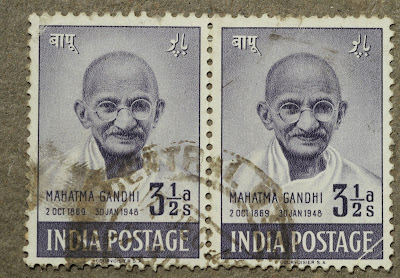5 Commemorative stamps were Issued in 1953. One to commemorate the Centenary of the Indian railways, two for the Centenary of Indian telegraph and two to commemorate the successful conquest of Mount Everest.
This Railway centenary stamp, has been a part of my collection ever since I remember collection stamps. Not really sure who gave it to me but I did dearly treasure it. The stamp was 2anna black and white issue
A bright violet and a brown stamp, commemorate the ascent of man on Mount Everest.
Blue-green and a blue stamp were released commemorating 100 years of Indian Telegraph. 60 Years later on 15 July2013 Ashwani Mishra sent the last telegram to Rahul Gandhi. Just like this stamp the 163 year old Indian telegraphs, passed into history this day. Like I have said before, philately gives one the satisfaction of treasuring this small part of Indian history.
This Railway centenary stamp, has been a part of my collection ever since I remember collection stamps. Not really sure who gave it to me but I did dearly treasure it. The stamp was 2anna black and white issue
A bright violet and a brown stamp, commemorate the ascent of man on Mount Everest.
Blue-green and a blue stamp were released commemorating 100 years of Indian Telegraph. 60 Years later on 15 July2013 Ashwani Mishra sent the last telegram to Rahul Gandhi. Just like this stamp the 163 year old Indian telegraphs, passed into history this day. Like I have said before, philately gives one the satisfaction of treasuring this small part of Indian history.

























